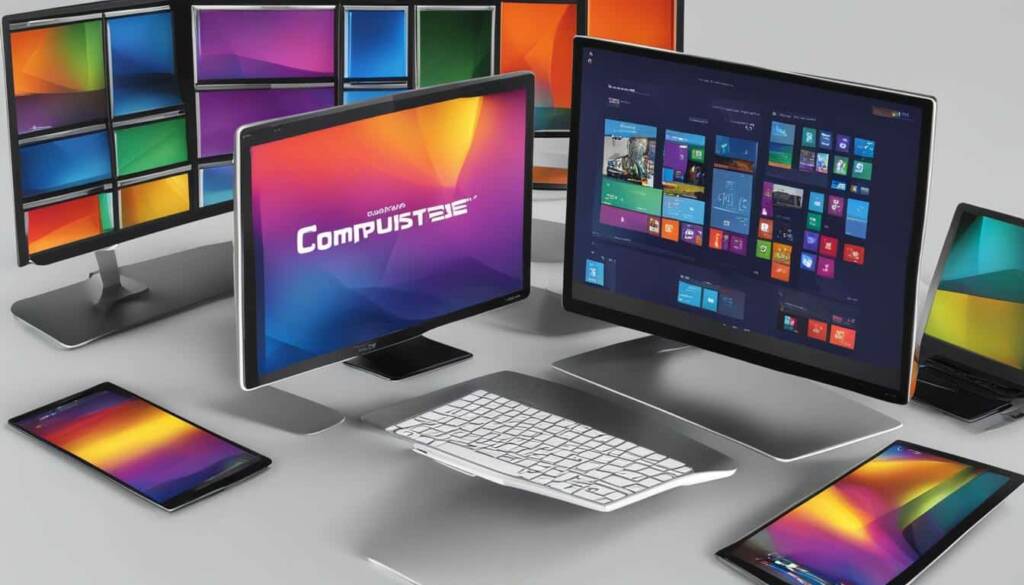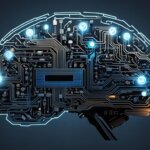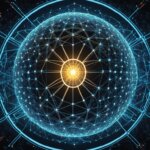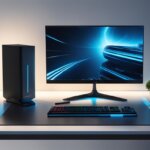Table of Contents
Welcome to our essential guide on understanding what a computer is and its functions. Whether you’re a tech enthusiast or just curious about this revolutionary device, we will provide you with a comprehensive overview of computers, their definition, and the different types available in the market.
So, what exactly is a computer? In simple terms, a computer is an electronic device that can manipulate information or data. It has the remarkable ability to store, retrieve, and process data, performing a wide range of tasks that have become essential in our lives.
Computers are incredibly versatile and can be used for various functions. They can assist us in typing documents, sending emails, playing games, browsing the web, editing spreadsheets, creating presentations, and even editing videos. The possibilities are endless!
When it comes to the components of a computer, there are two key elements: hardware and software. Hardware refers to the physical components of a computer, such as the keyboard, mouse, computer case, monitor, and internal parts. On the other hand, software is a set of instructions that tell the hardware what to do; it includes web browsers, games, word processors, and more.
Let’s explore the different types of computers available today. You may be familiar with desktop computers and laptops, which are commonly used for personal and work-related tasks. There are also tablets, servers, smartphones, wearables, game consoles, and even smart TVs. Each type serves its own unique purpose, catering to different user needs and preferences.
It’s worth mentioning that personal computers can be classified into two main categories: PCs and Macs. PCs, short for personal computers, are the most common type and use the Windows operating system. On the other hand, Macs are made by Apple and use the Mac OS X operating system.
In this guide, we’ll delve deeper into the fascinating world of computers, providing insights into hardware and software components, programming languages, and computer anatomy. Stay tuned!
The Basics of Computer Hardware
Computer hardware comprises the physical components of a computer and is vital for its functioning. The main hardware components include the CPU (Central Processing Unit), motherboard, RAM (Random Access Memory), HDD/SSD (Hard Disk Drive/Solid State Drive), PSU (Power Supply Unit), GPU (Graphics Processing Unit), computer tower/case, computer monitor, and optical drive.
The CPU acts as the brain of the computer, giving instructions to other components. The motherboard connects all the parts of the computer together and determines what inputs and outputs are available.
RAM is used to store data currently in use and affects the speed and efficiency of the computer. HDD/SSD are used to store information, with HDDs using a disk and magnets and SSDs using flash memory. The PSU supplies power to all the components, converting energy from the wall socket. The GPU is responsible for outputting visuals on the computer and is important for tasks like video playback and gaming.
The computer tower/case protects the components and provides ventilation, while the computer monitor displays the video output. The optical drive allows for reading and writing CDs and Blu-rays.
Understanding computer hardware is essential for anyone working with computers, whether it’s building a custom PC, troubleshooting hardware issues, or simply making informed purchasing decisions. Let’s take a closer look at each component.
CPU (Central Processing Unit)
The CPU, often referred to as the “brain” of the computer, is the main component responsible for executing instructions and performing calculations. It interprets and carries out instructions from computer programs by performing basic arithmetic, logical, control, and input/output (I/O) operations. Popular CPU brands include Intel and AMD.
Motherboard
The motherboard serves as the central hub that connects all hardware components together. It provides the necessary interfaces, slots, and connectors for devices such as the CPU, RAM, storage drives, and expansion cards. Motherboards come in different form factors and support various socket types, so compatibility with other components is crucial.
RAM (Random Access Memory)
RAM is the temporary storage space that holds data and instructions that the CPU needs to access quickly. It allows for faster data retrieval compared to storage drives. The amount and speed of RAM impact the computer’s performance when running multiple programs or handling memory-intensive tasks.
HDD/SSD (Hard Disk Drive/Solid State Drive)
HDDs and SSDs are storage devices that store permanent data, including the operating system, programs, and user files. HDDs use spinning disks and magnets to read and write data, while SSDs use flash memory. SSDs are faster, more reliable, and less susceptible to physical damage, though they are generally more expensive than HDDs.
PSU (Power Supply Unit)
The PSU is responsible for converting the electrical power from the wall socket into usable power for the components within the computer. It provides a steady and reliable source of power to keep the computer running smoothly. When choosing a PSU, it’s important to consider the power requirements of the components in the system.
GPU (Graphics Processing Unit)
The GPU is primarily responsible for rendering and displaying images, videos, and other visual content on the computer monitor. It offloads the graphics processing tasks from the CPU, allowing for smoother and more immersive visual experiences, especially in gaming and multimedia applications. Popular GPU manufacturers include NVIDIA and AMD.
Computer Tower/Case
The computer tower or case houses and protects the internal hardware components. It also provides cooling mechanisms, such as fans and vents, to maintain optimal operating temperatures. Cases come in various sizes and designs, offering different levels of expandability, cable management, and aesthetic customization.
Computer Monitor
The computer monitor is the display screen where users interact with the computer visually. It allows users to view output from the CPU and interact with software applications. Monitors come in different sizes, resolutions, and panel types, offering various features and display quality.
Optical Drive
The optical drive enables the reading and writing of optical discs, such as CDs, DVDs, and Blu-rays. While optical drives are becoming less common as digital distribution and cloud storage become more prevalent, they are still useful for tasks like installing software or watching movies.
The Basics of Computer Software
Computer software is an essential component that enables computers to perform specific tasks. It consists of digital components and programs that provide instructions to the computer on how to carry out various operations.
Programs, which are sets of instructions, play a crucial role in computer software. Programmers write these instructions to guide the computer through specific tasks and processes. These programs are designed to interact with the hardware components of the computer, enabling it to perform complex operations.
Algorithms are another important aspect of computer software. They are self-contained sets of operations used to solve specific problems or collections of problems. By following algorithms, computers can execute tasks efficiently and accurately.
To write programs, programmers use programming languages, which act as a bridge between human languages and the complex binary code that computers understand. High-level programming languages are designed to be easier for humans to read, write, and understand. They allow programmers to communicate complex instructions to the computer without having to deal with the intricacies of binary code.
Syntax is a fundamental concept in programming languages. It refers to the specific rules and commands that are unique to each programming language. By adhering to the syntax of a particular programming language, programmers can create accurate and functional programs.
Pseudocode is a valuable tool in the world of programming. It is a type of program description that outlines the steps of a program using non-code language. This technique allows programmers to plan and organize their programs before they start writing actual code. By using pseudocode, programmers can carefully think through the logical flow of their programs and identify potential issues or improvements.
When approaching programming tasks, it is essential to think like a programmer. This involves breaking down complex problems into incremental steps that the computer can understand and execute. Programmers aim to write efficient, reusable, and maintainable code to avoid unnecessary repetition and enhance the overall functionality of their programs.
Overall, computer software is a vital component that powers the capabilities of a computer. It encompasses programs, algorithms, programming languages, syntax, and pseudocode, all working together to ensure the successful execution of tasks and the efficient functioning of computer systems.
| Key Concepts | Explanation |
|---|---|
| Computer software | Digital components and programs that enable computers to perform tasks. |
| Programs | Sets of instructions written by programmers to guide the computer through specific tasks. |
| Algorithms | Self-contained sets of operations used to solve specific problems. |
| Programming languages | Bridge between human languages and binary code, facilitating communication between programmers and computers. |
| Syntax | Specific rules and commands unique to each programming language. |
| Pseudocode | Program description that outlines program steps using non-code language to plan programs before writing actual code. |
The Anatomy of a Computer
Understanding the anatomy of a computer is crucial for programmers and users alike. Computers consist of three major parts: the CPU (Central Processing Unit), memory, and I/O (Input/Output) devices.
Memory is where data is stored, with primary memory including ROM (Read-Only Memory) and RAM (Random Access Memory). ROM contains non-editable data used for basic operations and is non-volatile, meaning it is maintained even after the computer is turned off. RAM stores data currently in use and is volatile, meaning it is wiped when the computer is turned off.
Secondary memory refers to storage devices like hard drives and flash drives, used for mass storage and non-volatile. The CPU is like the brain of the computer, processing and executing instructions. It has three parts: the Control Unit, Arithmetic Logic Unit, and Registers. The Control Unit retrieves instructions from memory and determines which part of the CPU should execute them. The Arithmetic Logic Unit performs mathematical and logical operations, while Registers are small volatile memory locations used for temporary storage.
I/O devices allow the computer to interact with the outside world, with input devices like keyboards and mice and output devices like monitors and printers.
FAQ
What is a computer and what are its functions?
A computer is an electronic device that manipulates information or data, able to store, retrieve, and process data. It can be used for various tasks such as typing documents, sending emails, playing games, browsing the web, editing spreadsheets, creating presentations, and even editing videos.
What are the different types of computers?
There are different types of computers, including desktop computers, laptops, tablets, servers, smartphones, wearables, game consoles, and even TVs. Desktop computers are designed to be placed on a desk, while laptops are more portable and battery-powered. Tablets use a touch-sensitive screen, while servers serve up information to other computers on a network. Many electronic devices today, like smartphones and TVs, are essentially specialized computers. Finally, there are two main types of personal computers: PCs and Macs, with PCs being the most common and using the Windows operating system, while Macs are made by Apple and use the Mac OS X operating system.
What is computer hardware?
Computer hardware comprises the physical components of a computer and is vital for its functioning. The main hardware components include the CPU (Central Processing Unit), motherboard, RAM (Random Access Memory), HDD/SSD (Hard Disk Drive/Solid State Drive), PSU (Power Supply Unit), GPU (Graphics Processing Unit), computer tower/case, computer monitor, and optical drive.
What is computer software?
Computer software refers to the digital components and programs that allow a computer to perform specific tasks. Programs are sets of instructions written by programmers that provide the computer with the steps to carry out a task. Algorithms are self-contained sets of operations used to solve specific problems or collections of problems. Programming languages are used to write programs, and they act as a bridge between human languages and binary code.
What is the anatomy of a computer?
Understanding the anatomy of a computer is crucial. Computers consist of three major parts: the CPU (Central Processing Unit), memory, and I/O (Input/Output) devices. Memory is where data is stored, with primary memory including ROM (Read-Only Memory) and RAM (Random Access Memory). Secondary memory refers to storage devices like hard drives and flash drives. The CPU processes and executes instructions and has three parts: the Control Unit, Arithmetic Logic Unit, and Registers. I/O devices allow the computer to interact with the outside world.












